This lessons cover the "Six Harmonic Principles" that are used to do a Harmonic Anlyasis - the understanding of the functional sequence of chords.
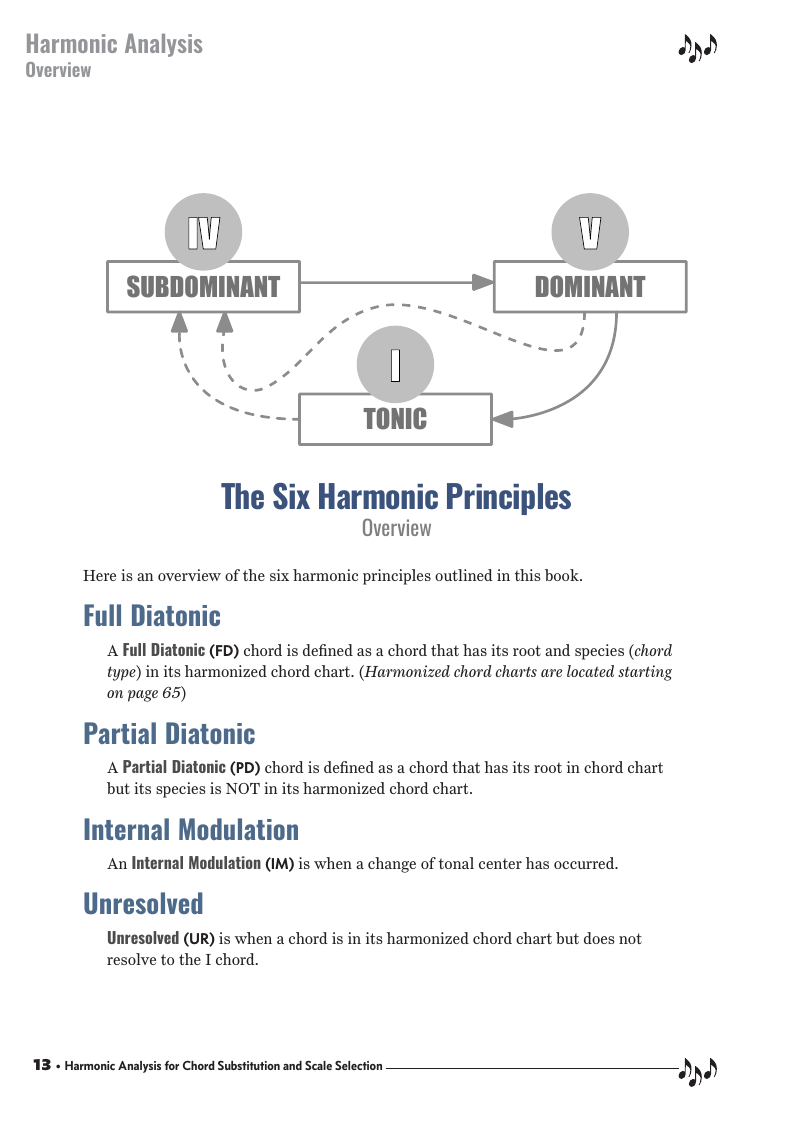
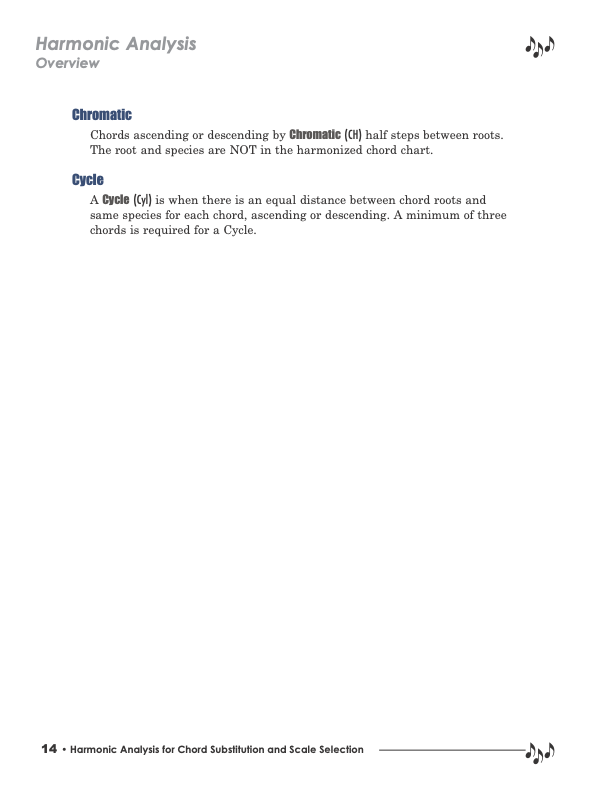


This lessons cover the "Six Harmonic Principles" that are used to do a Harmonic Anlyasis - the understanding of the functional sequence of chords.
Available for Premium Site Access Plans Only
The Six Harmonic Principles
Here is an overview of the Six Harmonic Principles.
Full Diatonic
A Full Diatonic (FD) chord is defined as a chord that has its root and species (chord type) IN its Harmonized Chord Chart(s) .
Partial Diatonic
A Partial Diatonic (PD) chord is defined as a chord that has its root in chord chart but its species is NOT in its Harmonized Chord Chart(s) .
Internal Modulation
An Internal Modulation(IM) is when a change of tonal* center has occurred.
Unresolved
Unresolved (UR) is when a chord is in its Harmonized Chord Chart(s) but does not resolve to the I chord.
Chromatic
Chromatic (CH) chords ascending or descending by chromatic half steps between roots. The root and species are NOT in the Harmonized Chord Chart(s) .
Cycle
A Cycle (CYL) is when there is an equal distance between chord roots and same species for each chord, ascending or descending. A minimum of three chords is required for a cycle.
*Tonal and key will be used interchangeable throughout this series.
This lessons cover the "Six Harmonic Principles" that are used to do a Harmonic Anlyasis - the understanding of the functional sequence of chords.
Available for Premium Site Access Plans Only
The Six Harmonic Principles
Here is an overview of the Six Harmonic Principles.
Full Diatonic
A Full Diatonic (FD) chord is defined as a chord that has its root and species (chord type) IN its Harmonized Chord Chart(s) .
Partial Diatonic
A Partial Diatonic (PD) chord is defined as a chord that has its root in chord chart but its species is NOT in its Harmonized Chord Chart(s) .
Internal Modulation
An Internal Modulation(IM) is when a change of tonal* center has occurred.
Unresolved
Unresolved (UR) is when a chord is in its Harmonized Chord Chart(s) but does not resolve to the I chord.
Chromatic
Chromatic (CH) chords ascending or descending by chromatic half steps between roots. The root and species are NOT in the Harmonized Chord Chart(s) .
Cycle
A Cycle (CYL) is when there is an equal distance between chord roots and same species for each chord, ascending or descending. A minimum of three chords is required for a cycle.
*Tonal and key will be used interchangeable throughout this series.
Related Lessons, Videos, Lesson Series, Songs, Books & Reference Charts, Resources & Assets, Workshops are below.
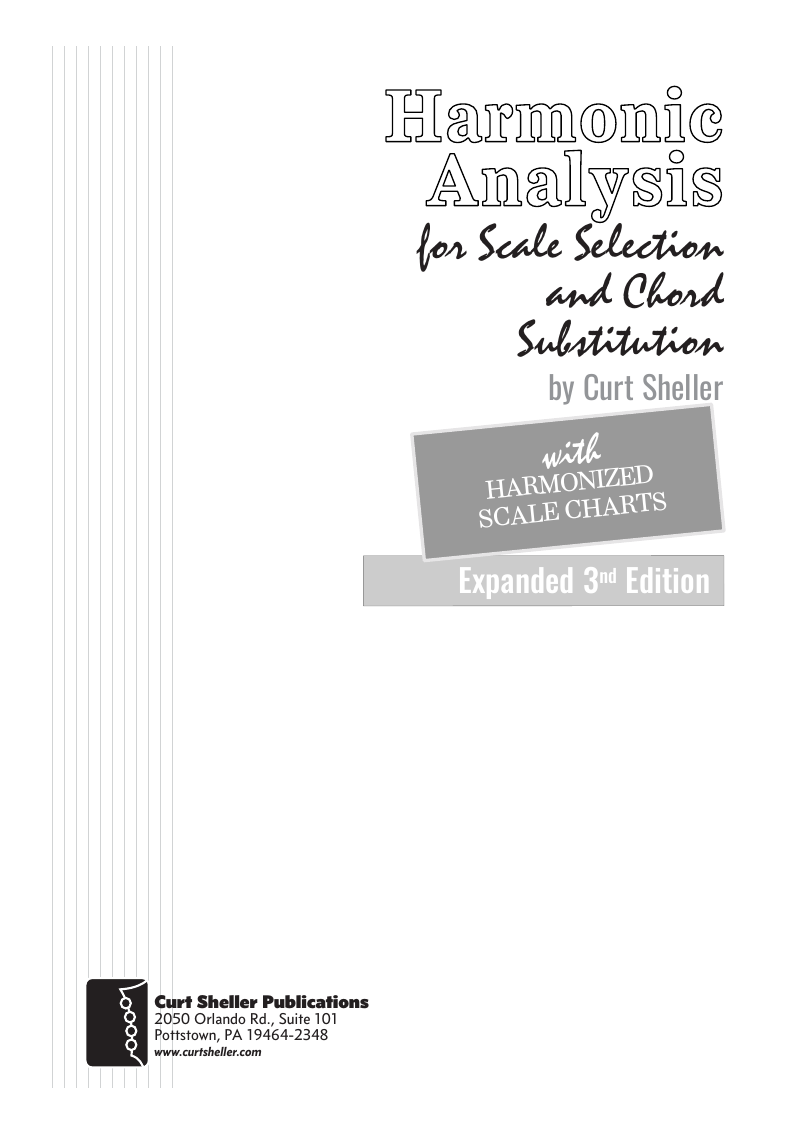
Harmonic Analysis ( HA ) is the process used to determine the harmonic function of chords within a chord progression. A chord progression is defined as a sequence of chords, each chord has a root and has a particular chord type. The relationship of a chord's root to a scale determines its function within that scale's tonality. Once a chord's function is identified, scale selections along with chord and scale substitutions can be made. This process is called Root Movement Analysis ( RMA ). This series of lessons are extracted from my book for use with individual private and on-line students. Each lesson directly corresponds the chapters in my book Harmonic Analysis for Scale Selection and Chord Substitution by Curt Sheller (me).
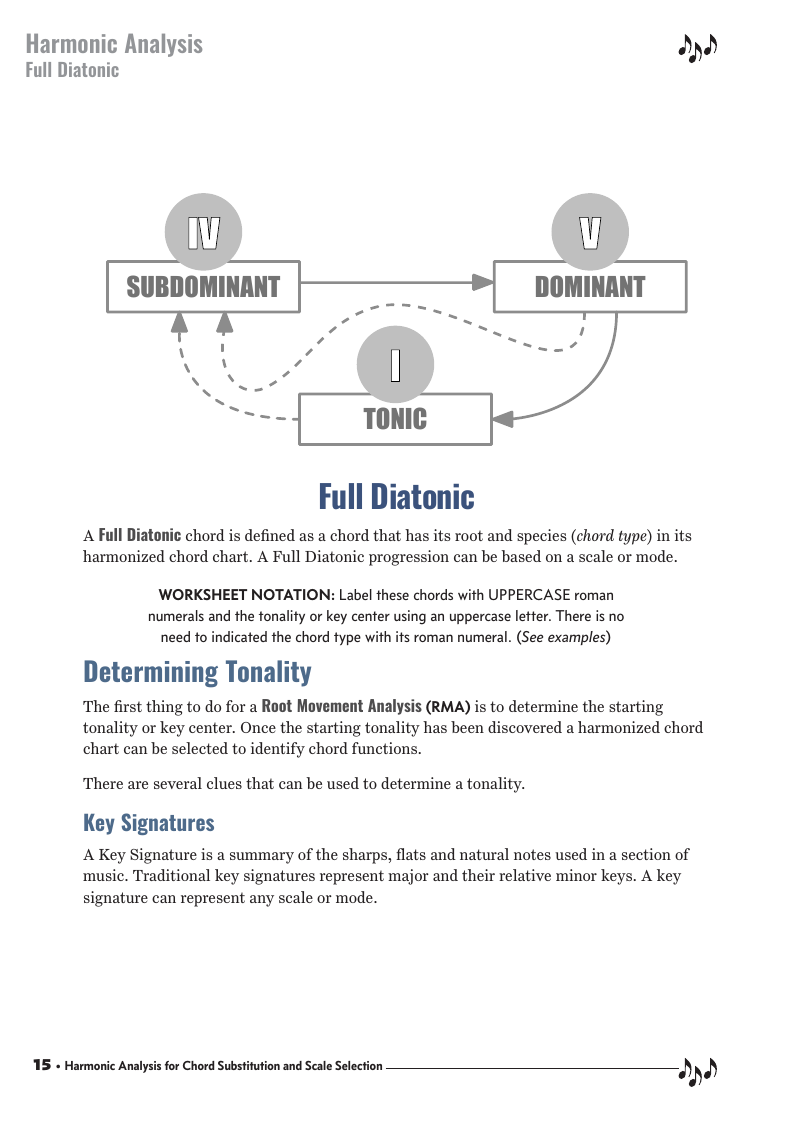
Harmonic Analysis is the understanding of the functional sequence of chords. It is the process used to analyze the harmonic structure of a progression, song, or composition. This analysis is then used to make scale selections for improvisation and chord substitution. This lesson covers the Full Diatonic harmonic principle.
Harmonic Analysis - The Six Harmonic Principles - Overview.
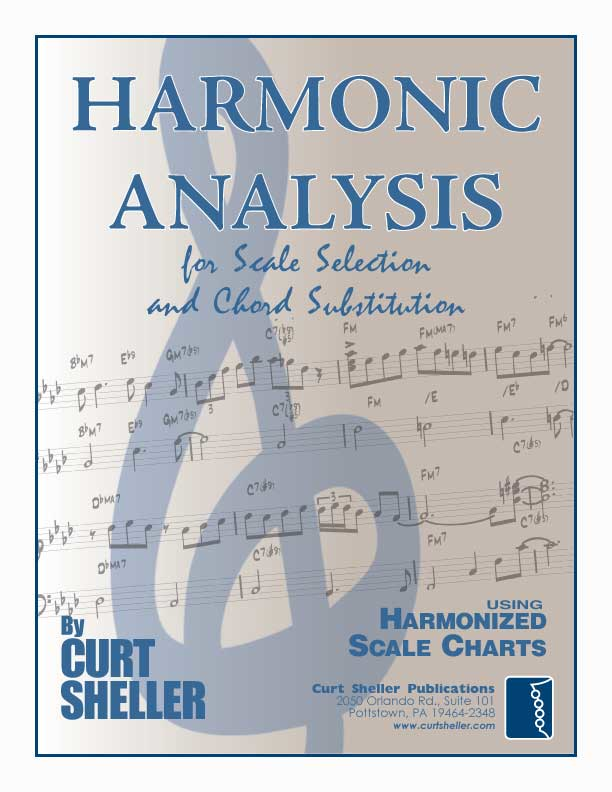
Harmonic Analysis is the understanding of the functional sequence of chords. It is the process used to analyze the harmonic structure of a progression, song or composition. This analysis is then used to make scale selections for improvisation and chord substitution.

Finally, learn the names of the notes of the ukulele fingerboard in C tuning .

Learn the six fingering principles to navigating the ukulele fingerboard. Fingering is one of the most universal topics. Book: Six Secrets of the Ukulele Fingering

Harmonic Analysis is the understanding of the functional sequence of chords. It is the process used to analyze the harmonic structure of a progression, song or composition. Book: Harmonic Analysis for Scale Selection and Chord Substitution
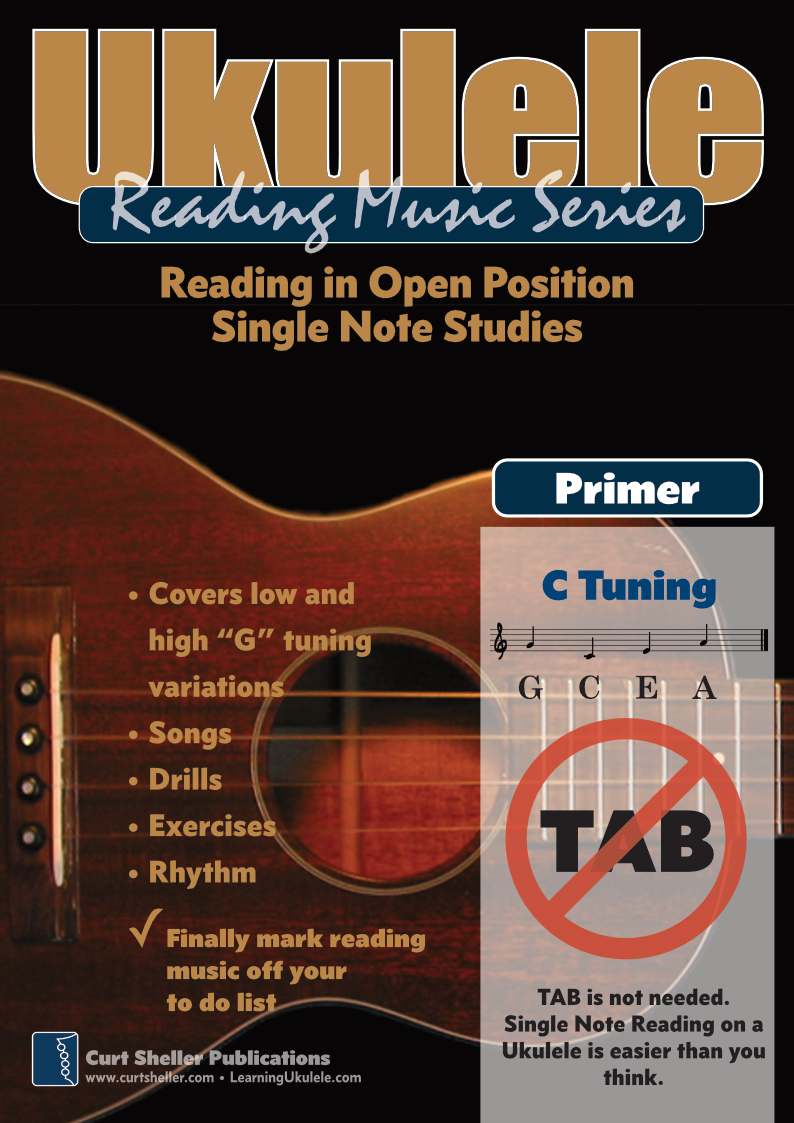
Learn to read single note melodies in the first/open position is a lot easier than you might think. Book: Ukulele – Reading Music Series – Primer
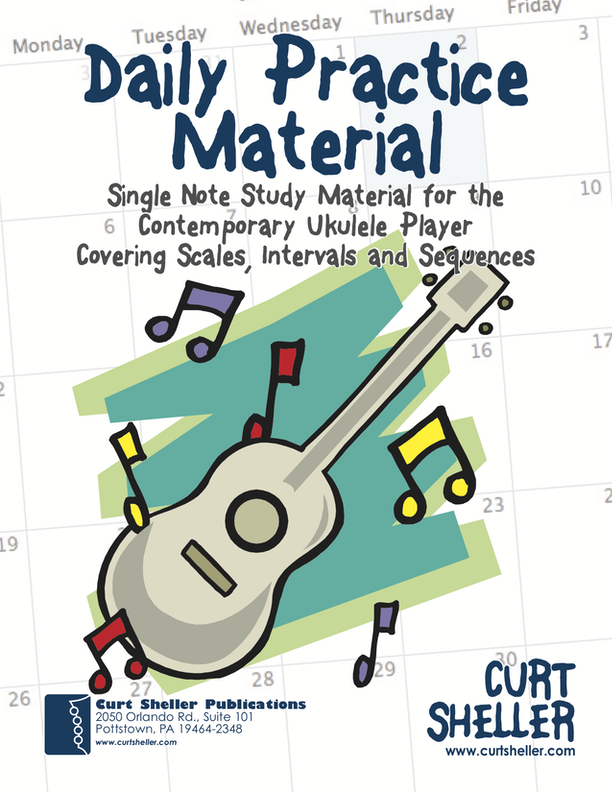
An organized collection of daily practice and reference material for the contemporary ukulele player for developing the vocabulary and knowledge necessary for single note playing. Book: Daily Practice Material for the Contemporary Ukulele
Checkout the Books & Reference Charts for additional Handy, Dandy Reference Charts.
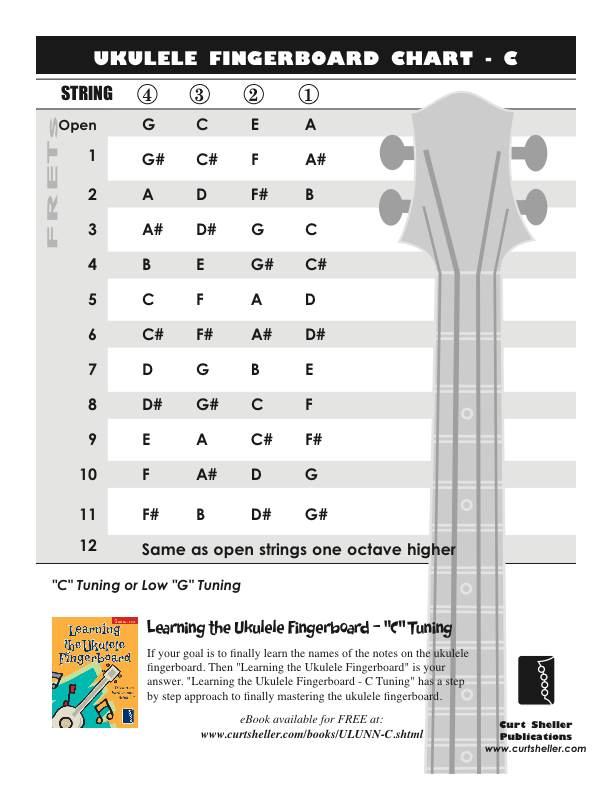
Ukulele Fingerboard Chart for C Tuning, Low or High G – G C E A
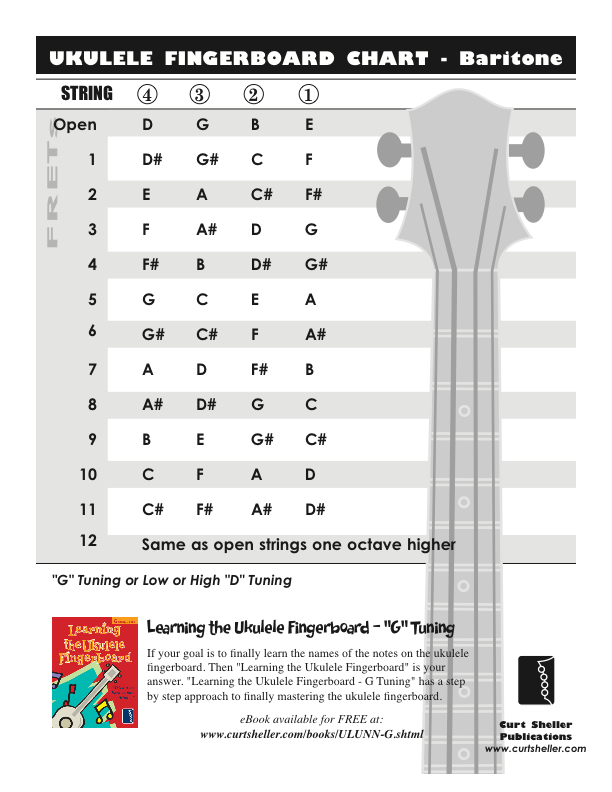
Ukulele Fingerboard Chart for G Tuning, Low or High A – D G B E

A handy reference chart of all 15 major and relative minor key signatures. US Letter 8.5 x 11 sized (ANSI-A), A4
Checkout the Books & Reference Charts for additional Handy, Dandy Reference Charts.



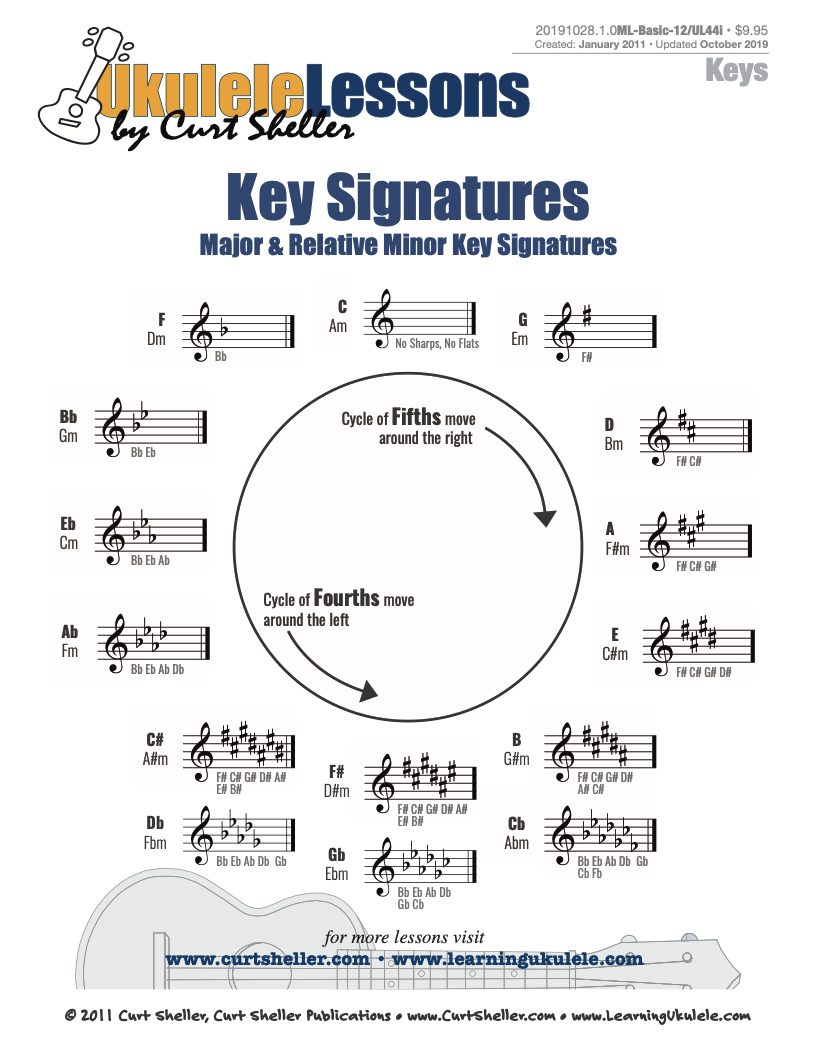
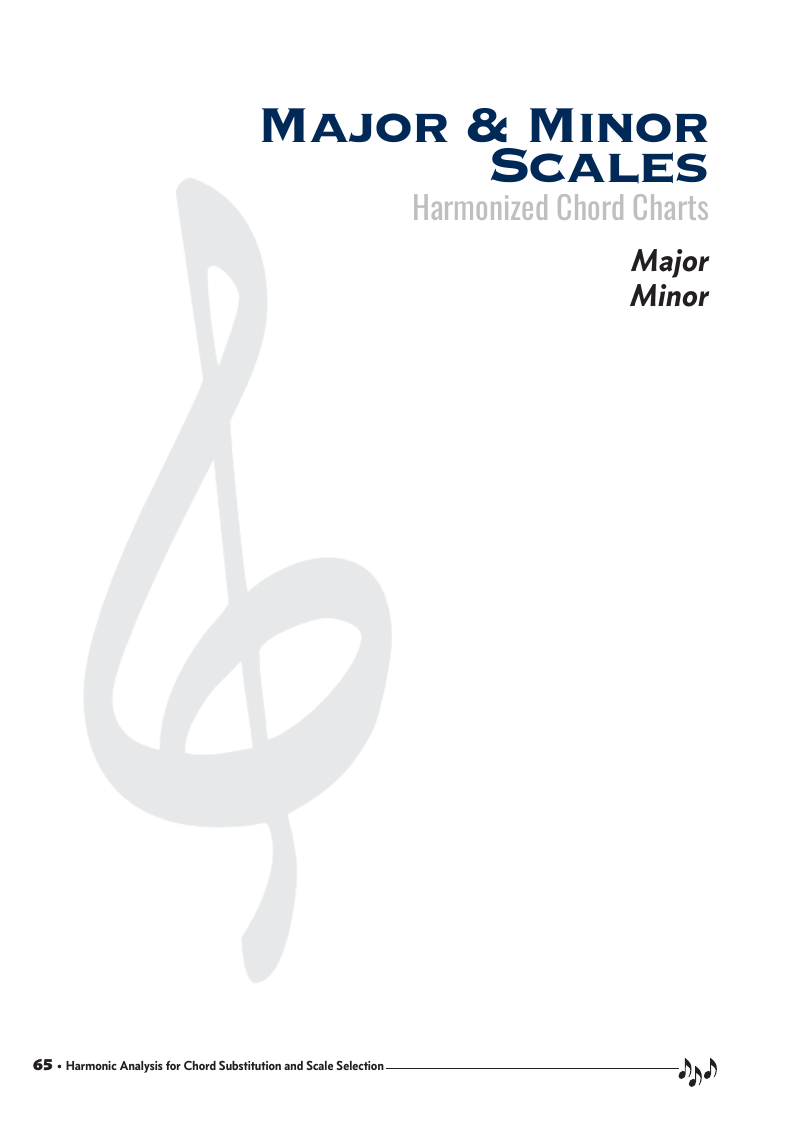
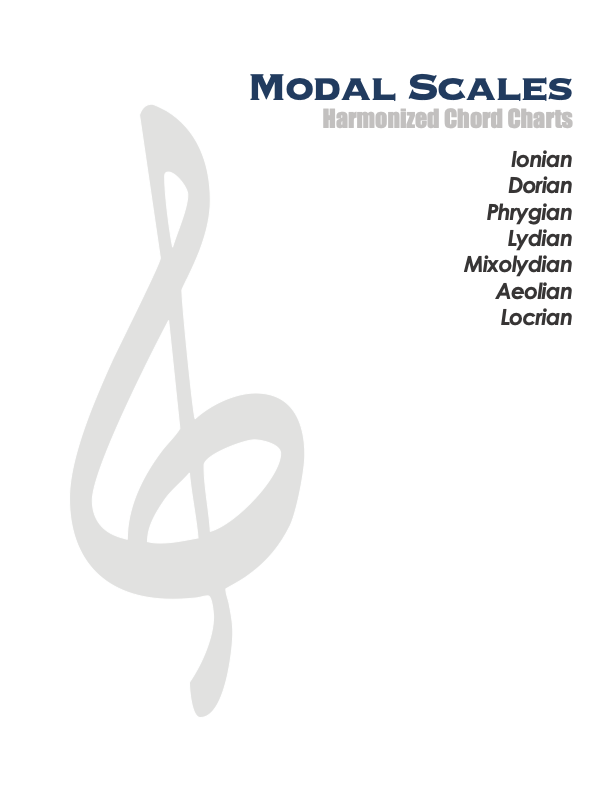
.jpg)